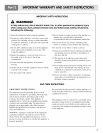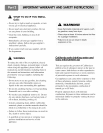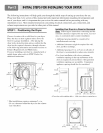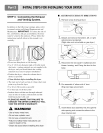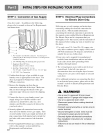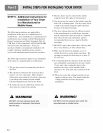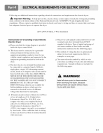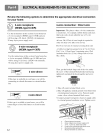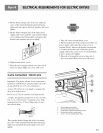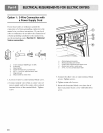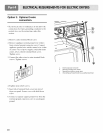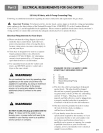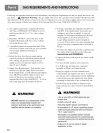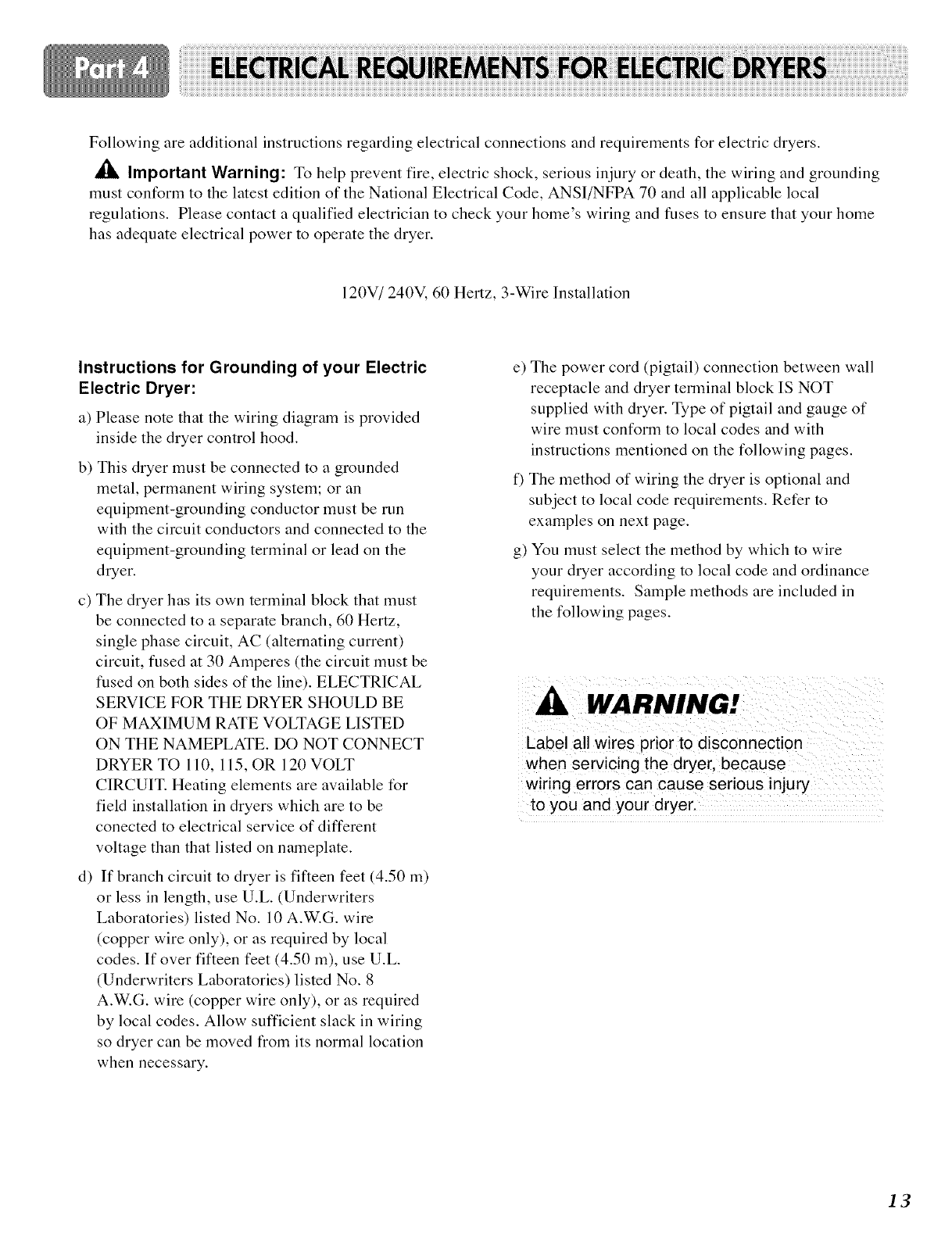
Following are additional instructions regarding electrical connections and requirements for electric dryers.
A_, Important Warning: To help prevent fire, electric shock, serious injury or death, the wiring and grounding
must conform to the latest edition of the National Electrical Code, ANSI/NFPA 70 and all applicable local
regulations. Please contact a qualified electrician to check your home's wiring and fuses to ensure that your home
has adequate electrical power to operate the dryer.
120V/240M 60 Hertz, 3-Wire Installation
Instructions for Grounding of your Electric
Electric Dryer:
a) Please note that the wiring diagram is provided
inside the dryer control hood.
b) This dryer must be connected to a grounded
metal, permanent wiring system; or an
equipment-grounding conductor must be run
with the circuit conductors and connected to the
equipment-grounding terminal or lead on the
dryer.
c) The dryer has its own terminal block that must
be connected to a separate branch, 60 Hertz,
single phase circuit, AC (alternating current)
circuit, fused at 30 Amperes (the circuit must be
fused on both sides of the line). ELECTRICAL
SERVICE FOR THE DRYER SHOULD BE
OF MAXIMUM RATE VOLTAGE LISTED
ON THE NAMEPLATE. DO NOT CONNECT
DRYER TO 110, 115, OR 120 VOLT
CIRCUIT. Heating elements are available for
field installation in dryers which are to be
conected to electrical service of different
voltage than that listed on nameplate.
d) If branch circuit to dryer is fifteen feet (4.50 m)
or less in length, use U.L. (Underwriters
Laboratories) listed No. 10 A.W.G. wire
(copper wire only), or as required by local
codes. If over fifteen feet (4.50 m), use U.L.
(Underwriters Laboratories) listed No. 8
A.W.G. wire (copper wire only), or as required
by local codes. Allow sufficient slack in wiring
so dryer can be moved from its normal location
when necessary.
e) The power cord (pigtail) connection between wall
receptacle and dryer terminal block IS NOT
supplied with dryer. Type of pigtail and gauge of
wire must conform to local codes and with
instructions mentioned on the following pages.
t) The method of wiring the dryer is optional and
subject to local code requirements. Refer to
examples on next page.
g) You must select the method by which to wire
your dryer according to local code and ordinance
requirements. Sample methods are included in
the following pages.
WARNING!
Label all wires prior to disconnection
when servicing the dryer, because
wiring errors can cause serious injury
to you and your dryer.
13



